What is On-Page SEO and Why is it Important?

On-Page SEO refers to a set of actions performed within your website to improve its ranking in search results.
These actions include optimizing content, HTML tags, URL structure, and page loading speed.
The importance of #On-Page SEO lies in its ability to help search engines better understand your site’s content and present it to users searching for relevant information.
In other words, On-Page SEO acts as a bridge between your site and search engines like Google.
By optimizing various elements of your site, you inform Google about your site’s topic and its value to users.
This leads to improved search engine rankings and attracts more organic traffic to your site.
Ignoring On-Page SEO can cause your site to get lost among a multitude of websites, leading to missed opportunities for customer acquisition and increased sales.
Therefore, investing in On-Page SEO is a necessity for any business aiming to succeed in the online world.
Paying attention to On-Page SEO helps you achieve a better position in Search Engine Results Pages and consequently drives more visits to your site.
On-Page SEO is a continuous process that requires ongoing review and updates.
Did you know that 94% of a company’s first impression is related to its website design?
Rasawweb, by offering professional corporate website design services, helps you create the best first impression.
✅ Create a professional and trustworthy image for your brand
✅ Easier attraction of potential customers and improved online presence
⚡ Get free corporate website design consultation
Keyword Research: A Fundamental Step in On-Page SEO
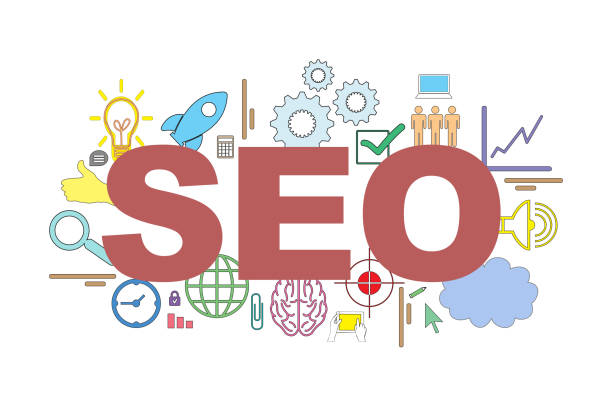
Keyword research is one of the most important steps in On-Page SEO.
Keywords are phrases that users employ to search for information on search engines.
By identifying keywords relevant to your business, you can create content that addresses the needs of your audience and attracts targeted traffic to your site.
To conduct keyword research, you can use various tools such as Ahrefs, Moz Keyword Explorer, and Ubersuggest.
These tools help you identify relevant keywords, check their search volume, and analyze competitor keywords.
When choosing keywords, pay attention to two important points: 1- the relevance of the keyword to your business and 2- the level of competition for that keyword.
Try to select keywords that are both relevant to your business and have less competition.
Also, do not overlook Long-Tail Keywords.
These keywords usually have lower search volume but can attract very targeted traffic to your site.
Proper use of keywords greatly assists you in On-Page SEO.
Optimizing Titles and Meta Descriptions for On-Page SEO
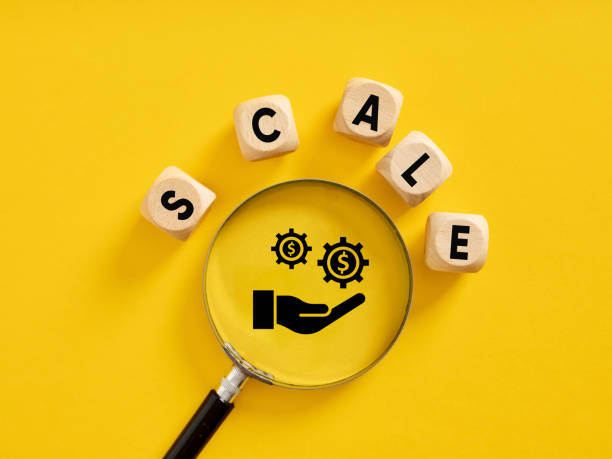
Titles and Meta Descriptions are two important elements in On-Page SEO that play a significant role in attracting users from Search Engine Results Pages (SERP).
The page title is a tag displayed at the top of the browser and in search results.
The meta description is a summary of the page’s content displayed below the title in search results.
To optimize titles, use keywords relevant to the page content, write an engaging and catchy title, and keep the title length between 50 to 60 characters.
To optimize meta descriptions, write a precise and attractive summary of the page content, use relevant keywords, and keep the meta description length between 150 to 160 characters.
Note that titles and meta descriptions should be unique and different for each page of your site.
By properly optimizing titles and meta descriptions, you can increase your site’s Click-Through Rate (CTR) and attract more traffic from search engines.
On-Page SEO will be much more effective by following these simple tips.
Generally, titles and meta descriptions are the first things users see in search results, so you should make every effort to optimize them and encourage users to click on your site’s link.
Consider the following example:
| Element | Description | Optimization Tips |
|---|---|---|
| Page Title (Title Tag) | Text displayed in the browser’s title bar and search results. | Should include the main keyword, be attractive and engaging, and be between 50 to 60 characters long. |
| Meta Description | A summary of the page content displayed below the title in search results. | Should be a precise and engaging summary of the content, include relevant keywords, and be between 150 to 160 characters long. |
Content Optimization for On-Page SEO

Content is king! This phrase is very common in the world of On-Page SEO and for good reason.
High-quality and valuable content not only attracts users but also signals to search engines that your site is a credible and trustworthy source.
To optimize content, you must first identify keywords relevant to your topic.
Then, use these keywords naturally and purposefully throughout your text.
Avoid excessive use of keywords (Keyword Stuffing), as this can harm your site’s ranking.
Your content should be engaging and readable for users, so use short and simple sentences, avoid long paragraphs, and incorporate images and videos to make the content more appealing.
Also, regularly update your content and strive to always provide new and relevant information to users.
On-Page SEO will yield much better results with high-quality content.
Tailor your content to the needs of your target audience and try to answer their questions and ambiguities.
Are your e-commerce site visitors leaving before making a purchase? Don’t worry anymore! With Rasawweb’s professional e-commerce website design services, solve the problem of converting visitors into customers forever!
✅ Significant increase in conversion rates and sales
✅ Unique and engaging user experience
⚡ Contact us now for a free consultation!
Optimized URL Structure and Its Impact on On-Page SEO
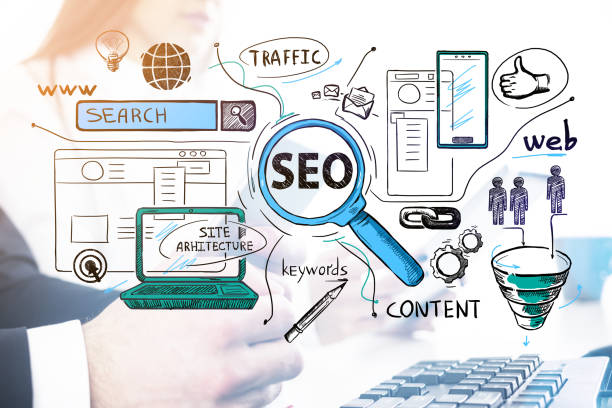
The URL (Uniform Resource Locator) structure plays an important role in On-Page SEO.
URLs should be short, readable, and relevant to the page’s content.
Avoid using long and complex URLs, as these can be confusing for both users and search engines.
The best practice is to use keywords relevant to the page content in the URL.
For example, if your page is about “best On-Page SEO methods,” your URL could be something.com/best-on-page-seo-methods.
Avoid using meaningless numbers and letters in your URL and try to keep URLs as simple and understandable as possible.
Also, use hyphens (-) instead of underscores (_) in URLs, as search engines recognize hyphens as word separators.
On-Page SEO will significantly improve with optimized URLs.
A proper URL structure helps search engines better understand page content and present it to users searching for relevant information.
Optimizing Images and Videos for On-Page SEO

Images and videos can make your content more attractive and engaging, but if not properly optimized, they can harm your site’s ranking.
To optimize images, use the Alt tag (Alternative Text) and provide a concise and relevant description of the image content.
Use descriptive file names for images (instead of default camera names) and reduce image file sizes as much as possible to increase page loading speed.
To optimize videos, use engaging and relevant titles and descriptions, upload videos to popular video platforms like YouTube, and use relevant keywords in video titles and descriptions.
Also, do not neglect creating a Video Sitemap so that search engines can easily find your videos.
On-Page SEO, through multimedia optimization (images and videos), can have a very positive impact on user experience and site ranking.
Optimizing images and videos not only helps improve SEO but also ensures that users stay on your site longer and increases their likelihood of returning.
Internal Linking: An Important On-Page SEO Strategy
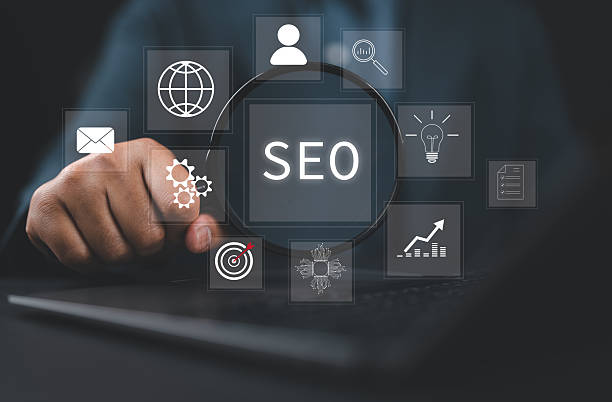
Internal Linking refers to the process of linking from one page to another within a website.
This helps search engines better understand your site’s structure and find relevant content.
Internal linking also helps users navigate your site easily and find the information they need.
When performing internal linking, pay attention to two important points: 1- links should be relevant to the page content, and 2- use descriptive Anchor Text relevant to the destination page.
Avoid using generic anchor texts like “click here” and try to use relevant keywords in the anchor text.
On-Page SEO, with proper internal linking, can help improve the ranking of important pages on your site.
Overall, internal linking is a powerful strategy that helps you optimize your site’s structure, improve user experience, and increase your site’s ranking in search results.
| Advantages | Description |
|---|---|
| Improved Site Navigation | Helps users easily navigate your site and find the information they need. |
| Improved Site Ranking | Helps search engines better understand your site’s structure and find relevant content. |
| Increased User Dwell Time | By providing relevant links, you encourage users to stay on your site longer. |
Page Loading Speed and Its Impact on On-Page SEO
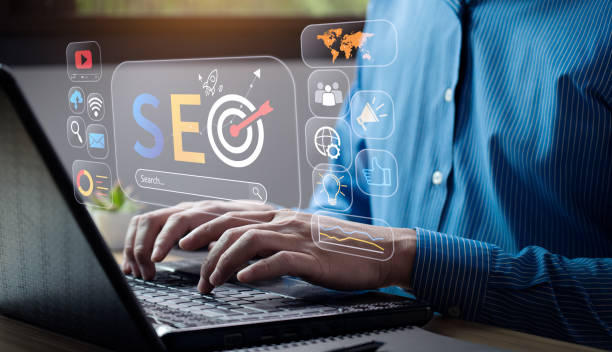
Page loading speed is one of the important factors in On-Page SEO and user experience.
Users who wait for a page to load often lose patience and leave the site.
This not only reduces site traffic but also harms your site’s ranking in search results.
To increase page loading speed, you can use various techniques such as optimizing images, enabling Gzip compression, using Content Delivery Networks (CDNs), and reducing the number of HTTP requests.
Also, use various tools like Google PageSpeed Insights and GTmetrix to check page loading speed and identify potential issues.
On-Page SEO with high loading speed keeps users satisfied and improves site ranking.
Overall, page loading speed is a critical factor in the success of any website, so you should make every effort to maximize your site’s speed.
Are your e-commerce site visitors leaving before making a purchase? Don’t worry anymore! With Rasawweb’s professional e-commerce website design services, solve the problem of converting visitors into customers forever!
✅ Significant increase in conversion rates and sales
✅ Unique and engaging user experience
⚡ Contact us now for a free consultation!
Mobile Optimization: A Necessity in On-Page SEO
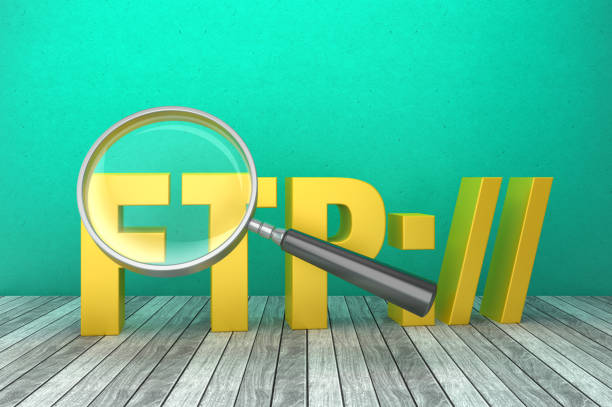
With the increasing use of mobile phones for searching information, mobile optimization has become a necessity in On-Page SEO.
Google and other search engines prioritize sites that are optimized for mobile.
To optimize for mobile, use Responsive Design so that your site automatically adapts to the screen size of various devices.
Use readable fonts and appropriate button sizes so that users can easily navigate your site.
Also, optimize page loading speed for mobile, as mobile users generally experience slower internet connections.
Mobile On-Page SEO attracts more traffic and improves user experience.
Testing the site on various devices and ensuring its proper functionality are among the important actions in this regard.
In summary, mobile optimization is a key factor in the success of any website in today’s world.
Continuous Review and Updates for On-Page SEO

On-Page SEO is a continuous process that requires ongoing review and updates.
Search engine algorithms are constantly changing, so you must always be aware of the latest changes and update your SEO strategy accordingly.
Regularly review your site’s performance, use web analytics tools like Google Analytics and Google Search Console to monitor your site’s traffic, identify your top keywords, and find potential issues.
Regularly update your content, fix broken links, and improve page loading speed.
By continuously reviewing and updating your On-Page SEO, you can maintain your site’s ranking in search results and attract more organic traffic to your site.
Remember that SEO is a long-term investment that requires patience and perseverance.
Frequently Asked Questions
| Question | Answer |
|---|---|
| What is a Meta Title and why is it important in On-Page SEO? | The meta title is the most important On-Page SEO element displayed at the top of the browser tab and in search results. It helps search engines and users understand the main topic of the page and should include the primary keyword. |
| What role does the Meta Description play in On-Page SEO? | The meta description is a short summary of the page content displayed below the title in search results. Although it does not directly impact ranking, its attractiveness can increase the Click-Through Rate (CTR). |
| How should keywords be used in page content? | Keywords should be used naturally and relevantly in strategic locations such as titles, headings, the first paragraph, and the body text. Avoid excessive keyword stuffing. |
| What is the importance of high-quality and comprehensive content in On-Page SEO? | High-quality, unique, informative, and comprehensive content that addresses user needs is of great importance. Search engines give higher rankings to content that provides real value. |
| What is the application of heading tags (H1-H6) in On-Page SEO structure? | Heading tags (H1, H2, H3, etc.) are used to structure content and indicate the importance of different sections. H1 is the main title of the page, and each page should only have one H1. Other tags are used for subheadings. |
| How can images be optimized to improve On-Page SEO? | To optimize images, use descriptive Alt Text that includes relevant keywords, reduce the image file size without compromising quality, and use meaningful and relevant file names. |
| What features does an SEO-friendly URL have? | An SEO-friendly URL should be short, readable, descriptive, include main keywords, and be free of unnecessary characters. The URL structure should be hierarchical and logical to be understandable for both users and search engines. |
| How does Internal Linking help On-Page SEO? | Internal linking, by connecting related pages, helps users and search engine crawlers better understand the site structure, transfer page authority, and increase user dwell time on the site. |
| What is the impact of page loading speed on On-Page SEO? | High loading speed is crucial for both user experience and SEO ranking. Slower pages may be overlooked by search engines and lead to an increased Bounce Rate. |
| Why is mobile-friendliness highly important in On-Page SEO? | Given the increasing number of searches via mobile devices, having a responsive and mobile-friendly site is essential for user experience and ranking in search results (Google’s mobile-first indexing). |
And other advertising services from Rasawweb Advertising Agency:
- Smart Marketplace: A blend of creativity and technology for user interaction through key page optimization.
- Smart Website Development: Dedicated service for growth and increasing click-through rates based on marketing automation.
- Smart Brand Identity: Designed for businesses seeking to boost sales through attractive user interface design.
- Smart Google Ads: Transform online growth with the help of SEO-driven content strategy.
- Smart Data Analysis: Professional solution for digital branding with a focus on intelligent data analysis.
And over a hundred other services in the field of internet advertising, advertising consultation, and organizational solutions.
Internet Advertising | Advertising Strategy | Advertorials
Sources
What is On-Page SEO and How is it Done? | Webzi
What is On-Page SEO and What are its Techniques? | Web24
On-Page SEO Training from 0 to 100 + On-Page SEO Checklist
Best Website On-Page SEO Techniques – SEO Academy | Mimoos
? For visibility and leadership in the digital world, Rasawweb Afarin Digital Marketing Agency is with you. We elevate your business by offering comprehensive services including personal website design, SEO, and social media management.
📍 Tehran, Mirdamad Street, next to the Central Bank, South Kazeroon Alley, Ramin Alley, No. 6


